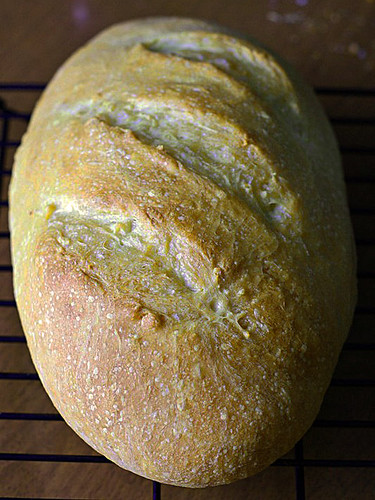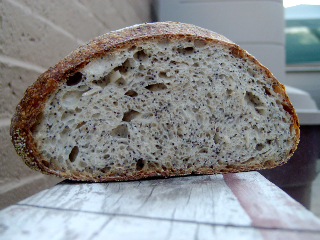Actually just 'pain de provence', using Floyd's recipe from years ago, with a local liquer from the town which is a.k.a. "Bois le duc"/Duketown. I went easy on the herbs as well. This is one of the best breads I have made so far, I am really proud of it. Also, I almost gave up half way, the dough was too sticky and I was under time pressure. Never a good thing with 'new' breads.
The pain de provence is the larger bread, just as big as the basket itself. Wish I could make a closeup..
The smaller is just a sourdough, which is finally rising a bit. Great taste.



